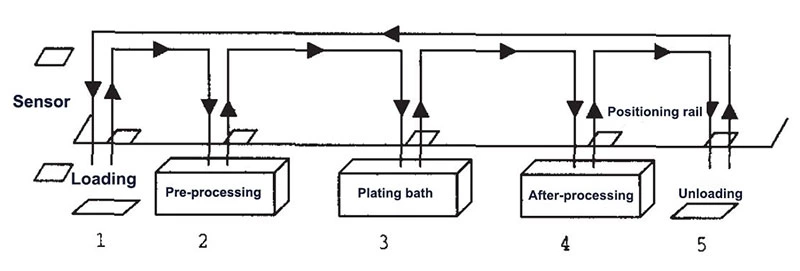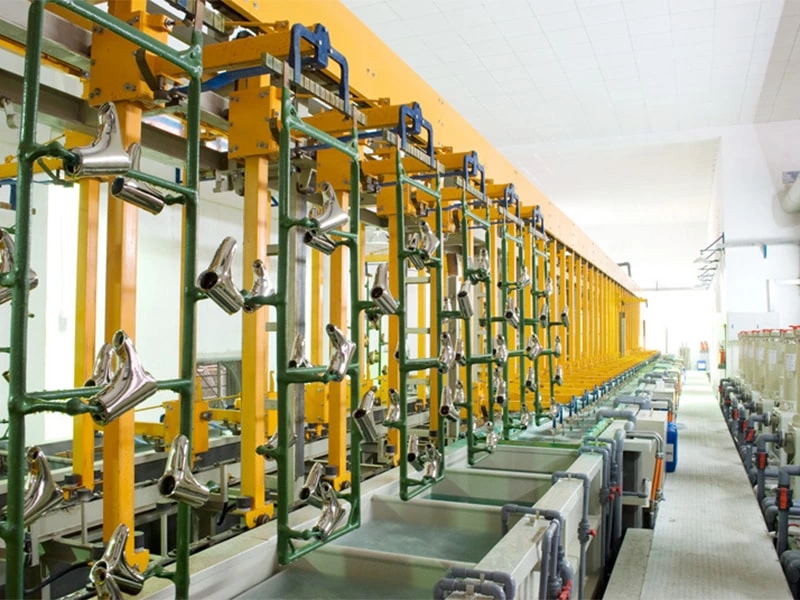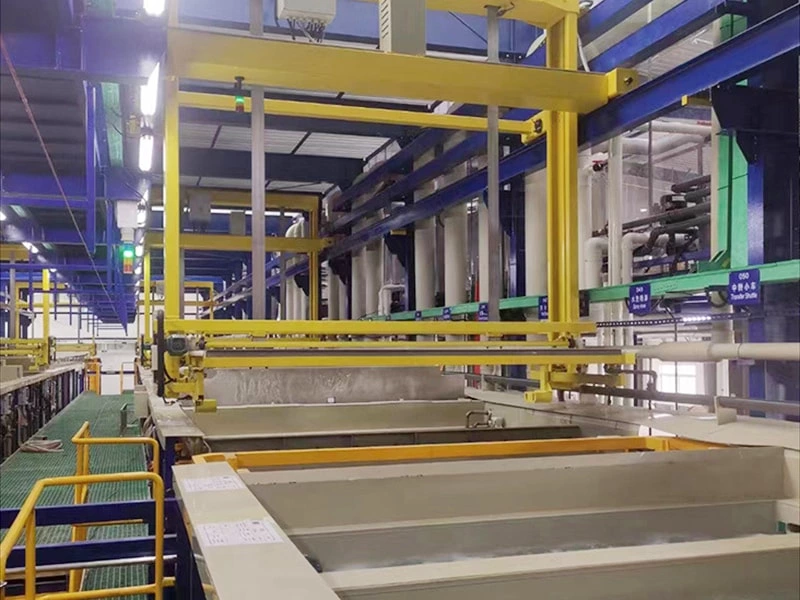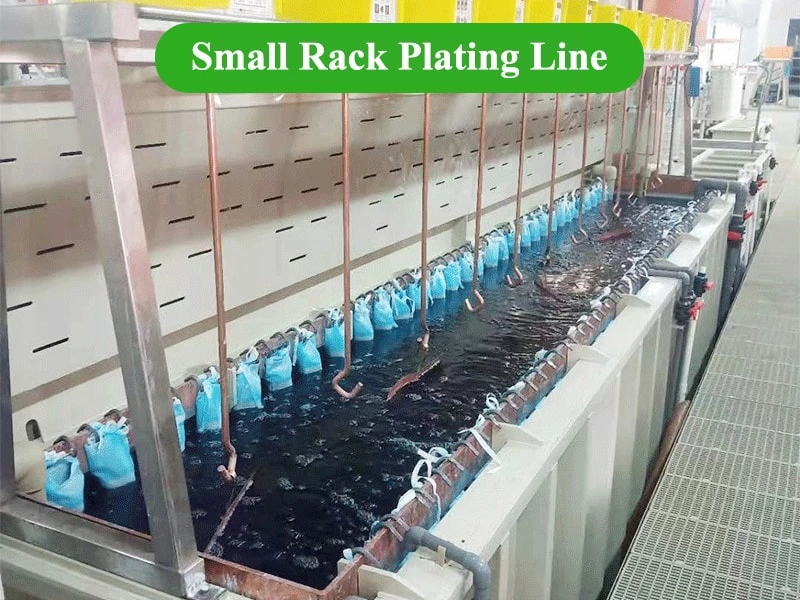Take You To Understand The Process Of Electroplating
Brief introduction to the electroplating process
Electroplating is an electrochemical process. It is also a redox process. The basic process of electroplating is to immerse the part in the solution of metal salt as the cathode, and the metal plate as the anode. After connecting to the DC power supply, the required coating is deposited on the part.
It is generally customary to divide the entire process of electroplating into three parts: pre-plating preparation, electroplating itself and post-plating treatment. The pre-plating preparation includes polishing, cleaning and other preparations, while the post-plating treatment is some essential cleaning and some additional treatments.
Here we take the process flow of nickel-chromium plating production line for copper parts as an example to introduce the process flow of electroplating:
1.Copper descaling 3 hangs → 2. Double wash with water → 3. Thermal descaling 6 hangs → 4. Ultrasonic wax removal 3 hangs → 5. Double wash with water → 6. Ultrasonic degreasing 3 hangs → 7. Double wash with water → 8. Negative electrolysis 2 hangs → 9. Positive electrolysis 2 hangs → 10. Triple wash → 11. Electrolytic activation 2 hangs → 12. Quadruple wash → 13. Dark nickel 3 hangs → 14. Full light nickel 12 hangs → 15. Five Combined washing → 16. Electrolysis before chrome 2 hanging → 17. Chrome plating 4 hanging → 18. Recycling 2 hanging → 19. Restoration 2 hanging → 20. Washing 6 hanging → 21. Ultrasonic 2 hanging → 22. Hot water washing → 23. Drying

Electroplating process requirements:
1. There should be good adhesion between the coating and the base metal, between the coating and the coating.
2. The coating should be finely crystallized, smooth and uniform in thickness.
3. The coating shall have the specified thickness and as few porosity as possible.
4. The coating should have the specified indicators, such as brightness, hardness, conductivity, etc. 5. The electroplating time and the temperature of the electroplating process determine the thickness of the coating.
5. The ambient temperature is -10℃~60℃;
6. The input voltage is 220V±22V or 380V±38V;
7. The maximum working noise of water treatment equipment should not exceed 80dB(A).
8. The relative humidity (RH) should not exceed 95%;
9. The COD content of raw water is 100mg/L~150000mg/L.
Electroplating is an atomic-level deposition process, which is essentially different from macroscopic coverage such as automization, melting, and brushing.
Electroplating is a process in which the particles participating in the deposition are converted into adsorbed atoms by applying an over potential on the crystal surface of the base material and then arranged into phases or form an amorphous stack. Therefore, this process will be closely related to the state of the matrix material and the surface structure.
Usually, when arranging the preparatory work before electroplating, the factors considered mainly cover the following aspects.
1. The nature of the substrate material to be plated
The variety, organizational structure, molding method, processing history and other aspects of the substrate are closely related to the choice of electroplating solution and process plan.
Different materials, casting, forging, hot-rolled or cold-rolled, heat-treated or not, and parts made by different processing techniques have different preparations. For important parts, the environment experienced and the history of processing or work must also be considered when arranging the process plan.
2. Surface cleanliness
There may be processing debris, oily impurities, scale or oxide film, heat-treated oil layer, and various adhered substances on the surface of the processed and shaped parts, as well as wax, thick oil seal oil layer, and thin layer.
Different pollutants such as anti-rust oil film and corrosion inhibitor need to be treated in different ways. For example, thick grease and thin oil film must use different levels of cleaning methods.
3. Erosion, size, quantity and precision of parts materials
Some materials are susceptible to corrosion, such as aluminum, magnesium, zinc, etc.; some will dissolve in anodic treatment, such as chromium, tin, etc measures to deal with. For parts that are large and small, small and many, with extremely complex shapes or extremely precise dimensions, the corresponding process methods must be considered.
4. Surface structure and state
The surface structure of the material to be plated will directly affect the structure and characteristics of the coating. The rough surface has higher porosity and is prone to underplating, and the rough inner holes are difficult to cover.
Circumstances like these should be taken into account when arranging construction. The same process method cannot adapt to various surfaces, otherwise the quality of the produced products will be uneven.
The above is a brief introduction to the electroplating process. For different metal surface requirements, the process of different plating metals will be slightly different in detail, but the working principle is the same.
While selecting electroplating equipment, it is also necessary to design a suitable electroplating method according to the product structure. When purchasing, it is necessary to contact a professional electroplating equipment manufacturer.





